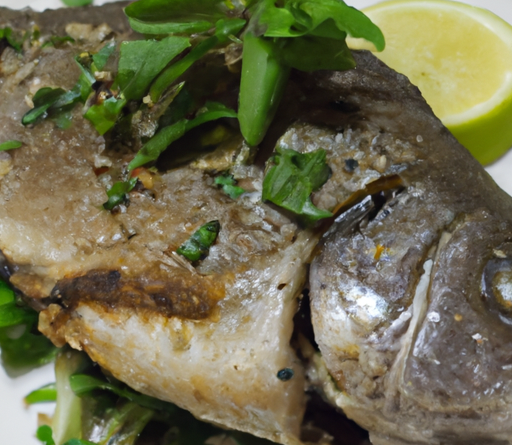In the world of Italian cuisine, pastina holds a special place as a comfort food with healing properties. Often referred to as Italian Penicillin, this tiny pasta is loved for its ability to soothe the soul and cure all ailments. Its small, star, orzo, or tubettini shapes are perfect for creating a warm and nourishing broth, making it a go-to dish for many Italians when feeling under the weather. Pastina is a versatile ingredient that can be incorporated into various soups, stews, and even creamy risottos, making it a staple in Italian households during the colder months.
The nickname Italian Penicillin stems from the belief that pastina has the power to heal and restore the body, much like the antibiotic itself. Whether it’s a simple chicken broth with pastina or a more complex minestrone, this humble pasta has the ability to bring comfort and warmth to those who enjoy it. Its easy digestibility and ability to provide a quick energy boost make it a popular choice for children and adults alike. So, the next time you’re feeling under the weather, consider indulging in a bowl of pastina to experience its comforting and healing effects.
The History of Pastina
The origins of pastina in Italian cuisine can be traced back to ancient times, where it was a staple food for many Italian families. Traditional methods of making pastina involve hand-rolling and cutting the dough into small, delicate shapes, creating a texture that is unique to this beloved dish. The cultural significance of pastina in Italian households is undeniable, as it is often enjoyed during special occasions and family gatherings, symbolizing warmth and comfort. Whether served in soups, broths, or simply with butter and cheese, pastina holds a special place in the hearts of many Italians, connecting them to their rich culinary heritage.
Origins of Pastina in Italian Cuisine
The origins of pastina can be traced back to ancient Italy, where it was crafted by skilled hands using traditional methods passed down through generations. This tiny pasta has been a staple in Italian households for centuries, dating back to the Roman Empire.
The name “pastina” itself translates to “little pasta,” reflecting its small, delicate nature. It was initially created as a way to make use of leftover dough, which was rolled out and cut into tiny pieces. Over time, pastina evolved into a beloved comfort food, often served in warm broths or mixed with butter and cheese. Its simplicity and versatility have made it a cherished part of Italian cuisine, beloved by both young and old.
The history of pastina is a testament to the enduring traditions and culinary expertise of Italian culture, and its impact on Italian cuisine has been profound.
Traditional Methods of Making Pastina
The process begins with selecting the finest semolina flour, which is then combined with water to form a smooth dough. This dough is carefully rolled out and cut into tiny, bite-sized shapes, such as stars, tubes, or rings, using special tools passed down through generations. The next step involves boiling the pastina in a flavorful broth until it reaches the perfect al dente texture. Some families even have their own secret recipes for creating the most delicious broth to accompany the pastina. The dish is then lovingly served in small bowls, often with a sprinkle of freshly grated Parmesan cheese on top. The traditional methods of making pastina are not just about the cooking process, but also about the care and attention that goes into ensuring each mouthful is a delightful experience for all who partake in it.
Cultural Significance of Pastina in Italian Households
It becomes clear that this humble dish holds a special place in the hearts of many. In Italy, pastina is not just a meal, but a symbol of comfort, love, and tradition. From childhood memories of grandmothers serving steaming bowls of pastina on chilly evenings to family gatherings where everyone comes together to enjoy this simple yet delicious dish, pastina is more than just food—it is a representation of warmth and togetherness.
In Italian households, pastina is often the go-to meal for sick days, bringing comfort and nourishment to those in need. It is also a staple dish during festive occasions, symbolizing the importance of family and unity. The act of making and sharing pastina is a cherished tradition that has been passed down through generations, reinforcing the values of love, care, and togetherness within Italian families. The cultural significance of pastina in Italian households goes beyond just a meal—it is a celebration of family and tradition.
The Healing Properties of Pastina
Beliefs and traditions surrounding pastina as a healing food have been passed down through generations, with many cultures viewing it as a comforting and nourishing meal for the sick and convalescent. Its small, soft texture makes it easy to digest, while its high carbohydrate content provides a quick source of energy. Folk remedies and anecdotes related to pastina’s healing properties abound, with stories of miraculous recoveries and soothing effects. Nutritional benefits of pastina for the sick and convalescent include its ability to provide essential nutrients and promote healing. Overall, pastina holds a special place in the hearts and kitchens of many as a healing and comforting food.
Beliefs and Traditions Surrounding Pastina as a Healing Food
Throughout history, pastina has been revered for its ability to nourish and comfort the sick and convalescent. In many cultures, it is believed that a warm bowl of pastina can soothe the soul and bring healing to the body. Families have passed down recipes and traditions, each one believed to hold the key to unlocking the healing properties of this simple yet powerful food.
In Italian folklore, it is said that a mother’s love and care are infused into every pot of pastina, making it a potent remedy for any ailment. The act of preparing and serving pastina is considered a sacred ritual, believed to bring comfort and relief to the unwell. Across the world, pastina is a symbol of love and healing, cherished for its ability to bring warmth and nourishment to those in need.
Nutritional Benefits of Pastina for the Sick and Convalescent
Pastina, with its small, easily digestible shape, provides a comforting and nourishing option for those in need of gentle sustenance. The soft texture of pastina makes it easy to consume, even for those with delicate digestive systems. Additionally, pastina is a good source of carbohydrates, which can provide a quick and easily accessible source of energy for individuals who may have a reduced appetite or difficulty eating. Its mild flavor also makes it a versatile ingredient that can be combined with various broths, vegetables, and proteins to create a nourishing meal that is easy on the stomach. Furthermore, the high starch content in pastina can help to thicken soups and stews, providing a comforting and hearty texture that is often well-received by those in recovery.
Folk Remedies and Anecdotes Related to Pastina’s Healing Properties
For centuries, pastina has been believed to have magical healing powers, especially when it comes to treating the common cold and flu. Many grandmothers and elders swear by the soothing effects of a warm bowl of pastina to ease a sore throat and clear up nasal congestion. In Italian culture, it is also believed that a bowl of pastina can bring comfort and healing to those feeling under the weather.
Anecdotes abound about the miraculous recovery of sick family members after consuming pastina, leading to the widespread belief in its healing abilities. Some even claim that pastina has the power to boost the immune system and aid in recovery from various ailments. These tales have been passed down through generations, solidifying pastina’s status as a beloved comfort food with remarkable healing properties.
Pastina Recipes
Classic ways to prepare pastina for the sick include simple broths and basic seasonings to provide comfort and nourishment. Variations of pastina dishes in different regions of Italy showcase the diverse culinary traditions, from creamy soups in the north to tomato-based sauces in the south. Modern twists on traditional pastina recipes incorporate trendy ingredients like kale, truffle oil, and even fusion flavors inspired by international cuisines. Whether you’re seeking a comforting bowl of nostalgia or a trendy spin on an old favorite, pastina recipes offer a world of possibilities to explore and savor.
Classic Ways to Prepare Pastina for the Sick
It’s important to understand the classic ways to prepare this comforting dish for the sick. In Italy, pastina is often prepared in a simple broth, seasoned with a touch of salt and a sprinkle of Parmesan cheese. This classic preparation is gentle on the stomach and provides nourishment and comfort to those who are not feeling well. The broth helps to keep the body hydrated, while the small, soft pasta is easy to digest. Additionally, adding a few vegetables, such as carrots or celery, to the broth can provide essential vitamins and minerals to aid in recovery. Some may also add a small amount of butter or olive oil for extra nourishment and flavor. This traditional approach to preparing pastina for the sick has been passed down through generations and continues to be a go-to dish for those in need of a little extra care and comfort.
Variations of Pastina Dishes in Different Regions of Italy
In Italy, pastina is a staple comfort food that varies in preparation from region to region, showcasing the diverse culinary traditions of the country.
In the northern regions such as Lombardy and Veneto, pastina is often served in rich, hearty broths, perfect for warming up during the cold winters. Moving towards central Italy, in Tuscany and Umbria, pastina is incorporated into rustic soups with fresh vegetables and herbs, highlighting the simplicity of the dish.
In the southern regions like Campania and Sicily, pastina takes on a more indulgent form, with creamy, cheesy variations that are reminiscent of lasagna. Finally, in the coastal regions of Liguria and Puglia, pastina is often paired with seafood, creating light and flavorful pasta dishes that are perfect for warm summer days.
These regional variations reflect the diverse culinary landscape of Italy, showcasing the adaptability of pastina to suit different tastes and preferences.
Modern Twists on Traditional Pastina Recipes
Let’s take a look at some modern twists on traditional pastina recipes. In today’s culinary world, chefs and home cooks are constantly experimenting with innovative ways to elevate classic dishes, and pastina is no exception.
One popular modern twist on traditional pastina recipes is adding unique ingredients such as truffle oil, wild mushrooms, and pancetta to create a gourmet version of the comforting dish. These additions bring a depth of flavor and sophistication to the simple pasta, making it a hit at dinner parties and special occasions.
Another modern take on pastina involves incorporating international flavors, such as curry, coconut milk, and lemongrass, to create a fusion of Italian and exotic cuisines. The result is a flavorful and aromatic dish that offers a delightful departure from the traditional preparation.
Whether it’s incorporating trendy ingredients or experimenting with global flavors, modern twists on traditional pastina recipes offer a fresh and exciting take on this beloved comfort food.
The Role of Pastina in Italian Culture
The role of Pastina in Italian culture is deeply rooted in tradition and family. From being a comforting staple in Italian households to being prominently featured in celebrations and rituals, Pastina holds a special place in the hearts of Italians. Its significance is not only limited to the dinner table but extends to Italian literature, art, and film, where it is often used to evoke feelings of nostalgia and warmth. Whether it’s Nonna’s famous Pastina soup or the portrayal of Pastina in Italian cinema, the cultural importance of this simple yet beloved dish cannot be overstated. It truly is a symbol of love, tradition, and togetherness.
Pastina as a Comfort Food in Italian Families
Pastina holds a special place in Italian families as a comforting and nurturing food. It is often served to young children, the sick, and the elderly as a source of warmth and nourishment. The simple yet flavorful nature of pastina makes it a staple in Italian households, bringing a sense of tradition and comfort to the dining table. The preparation of pastina is often passed down through generations, with each family adding their own unique touch to the dish.
In times of joy and sorrow, pastina is there to provide solace and satisfaction. Whether it’s a warm bowl of pastina soup on a cold winter’s day or a creamy pastina casserole shared among loved ones, this humble dish has the power to bring people together and create lasting memories. Its presence in Italian culture is a testament to the significance of food as a symbol of love, care, and connection within the family unit.
Celebrations and Rituals Involving Pastina in Italian Culture
After a long day of hard work, nothing brings Italian families together quite like a steaming bowl of pastina. It is a staple comfort food that is often enjoyed during family gatherings, especially during the holiday season. Christmas Eve, known as La Vigilia, is a particularly special time when pastina is served as part of the traditional Feast of the Seven Fishes. This elaborate meal celebrates the anticipation of the birth of Jesus and is a time for families to come together and share in the joy of the season.
In addition to holiday traditions, pastina also plays a significant role in other celebrations such as weddings and baptisms. It is often served as a symbol of good luck and prosperity, bringing warmth and comfort to those partaking in these joyous occasions. Whether it’s a special family gathering or a momentous life event, pastina continues to be an integral part of Italian culture, bringing people together in times of celebration and joy.
Pastina in Italian Literature, Art, and Film
It’s fascinating to explore how this beloved comfort food has made its way into literature, art, and film. From heartwarming stories of generations coming together over a steaming bowl of pastina in Italian novels to iconic depictions of family dinners in Italian art, pastina has become a symbol of love, comfort, and tradition. In Italian cinema, the sight and sound of a pot of pastina simmering on the stove evoke a sense of nostalgia and warmth, transporting viewers to a time of simplicity and togetherness.
In literature, pastina often serves as a recurring motif, representing the ties that bind families and the enduring traditions that are passed down through the generations. From the pages of classic Italian novels to modern-day bestsellers, pastina continues to play a significant role in capturing the essence of Italian family life.
Scientific Research on Pastina
The nutritional analysis of pastina provides valuable insight into its health benefits. Research studies have shown that consuming pastina can contribute to improved overall health, including weight management and increased energy levels. Medical professionals have also shared their perspectives on the healing properties of pastina, citing its ability to provide essential nutrients and support digestive health. As scientific research on pastina continues to expand, it is becoming increasingly clear that this humble pasta variety holds great potential in promoting well-being. With its rich history and promising health benefits, pastina is emerging as a staple in the realm of nutritional science.
Nutritional Analysis of Pastina
Nutritional analysis of pastina reveals its impressive composition. This traditional pasta is often made from durum wheat, which provides a good source of complex carbohydrates, fiber, and essential nutrients such as iron and B vitamins. Additionally, the small size of pastina makes it easily digestible and a suitable option for individuals of all ages.
In addition to its nutrient content, pastina is also a versatile ingredient that can be combined with various nutritious foods such as vegetables, lean proteins, and healthy fats, making it a well-rounded meal option. Its low fat and sodium content further enhance its health benefits, making it an attractive choice for those seeking a balanced diet. Understanding the nutritional profile of pastina adds depth to its role in Italian culture and showcases its potential as a nourishing food choice.
Studies on the Health Benefits of Consuming Pastina
Studies have shown that pastina is not only a comfort food but also a nutritious option for individuals. Nutritional analysis of pastina has revealed that it is a good source of carbohydrates, which provides the necessary energy for the body. Additionally, pastina contains essential nutrients such as iron, zinc, and B vitamins, contributing to overall health and well-being.
Research has also indicated that consuming pastina may have positive effects on heart health, as it is low in sodium and cholesterol. Furthermore, the small size and easy digestibility of pastina make it a suitable option for individuals with digestive issues. Medical professionals have expressed their support for the inclusion of pastina in a balanced diet, citing its potential to support healthy weight management and provide sustained energy throughout the day. As scientific studies continue to explore the health benefits of pastina, its role in promoting overall wellness becomes increasingly evident.
Medical Professionals’ Perspectives on Pastina as a Healing Food
Many healthcare providers recognize pastina as a comforting, easily digestible food that can be soothing for those with stomach ailments or recovering from illnesses. Some doctors even recommend it to patients as a gentle way to introduce solid foods after a period of illness. Pastina’s soft texture and mild flavor make it an ideal choice for individuals with sensitive digestive systems or those who have trouble swallowing. Additionally, medical professionals often praise pastina for its ability to provide essential nutrients and energy to those who may have difficulty eating more substantial meals. It’s not uncommon to hear doctors and nurses extolling the virtues of pastina as a nourishing and healing option for patients in need of gentle sustenance.
The Global Appeal of Pastina
The global appeal of pastina extends beyond its Italian roots. Its adoption in other cuisines and cultures has introduced new variations and flavors, captivating the taste buds of people worldwide. International interest in pastina as a comfort food has sparked creativity in the kitchen, with fusion dishes featuring pastina becoming increasingly popular. Cultural exchange has led to the incorporation of diverse ingredients and cooking techniques, resulting in a delightful blend of flavors and textures. From traditional Italian recipes to innovative international creations, pastina continues to bring people together through the joy of food and the shared experience of savoring a comforting bowl of deliciousness.
Adoption of Pastina in Other Cuisines and Cultures
From the cobblestone streets of Rome to the bustling markets of Japan, pastina has found its place on the tables of many households. The adoption of pastina in various cuisines and cultures speaks to its universal appeal and adaptability in different culinary traditions.
In the United States, pastina has become a beloved comfort food, especially among Italian-American communities. Its simple yet comforting nature has made it a staple in many homes, often served as a warm bowl of nostalgia. In countries like Greece and Turkey, pastina has been embraced as a versatile ingredient in soups and savory dishes, adding a delightful texture and flavor to traditional recipes. As the world continues to embrace the charm of pastina, its journey from a humble Italian staple to a global culinary phenomenon is a testament to its enduring appeal.
International Interest in Pastina as a Comfort Food
Its simple yet satisfying nature has sparked an international interest, with many cultures adopting it as a go-to comfort food. From the bustling streets of Italy to the tranquil villages of Greece, pastina has found its way into the kitchens and hearts of people everywhere.
In countries like the United States and Canada, pastina has become a beloved staple in many households, offering a sense of nostalgia and warmth with every spoonful. Its versatility has also led to its incorporation into various international cuisines, from Mexican sopa de fideo to Filipino sopas. The international interest in pastina as a comfort food has not only brought people together over a shared love for this humble dish but has also sparked cultural exchange and fusion dishes that celebrate the diversity of flavors and traditions.
Cultural Exchange and Fusion Dishes Featuring Pastina
Across the world, pastina has been adopted into various cuisines and cultures, sparking international interest and creating a delicious fusion of flavors. From Italian-American adaptations to Asian-inspired dishes, pastina has found its way into the hearts and kitchens of people from diverse backgrounds.
In the bustling streets of New York City, you can find Italian-American fusion restaurants serving up hearty bowls of pastina with a twist, incorporating local ingredients and flavors. In Japan, pastina has been embraced as a soothing comfort food, often paired with traditional Japanese broths and toppings. Cultural exchange has led to the creation of fusion dishes featuring pastina, such as Mexican-inspired pastina soups with a hint of spice and a touch of lime.
The global love for pastina has sparked a beautiful exchange of culinary traditions, resulting in unique and delightful fusion dishes that showcase the versatility of this humble yet comforting pasta.
Pastina in the Modern World
From classic dishes to trendy, modern recipes, pastina has proven its versatility. Moreover, in the modern wellness and health food movements, pastina has found its place as a nutritious and satisfying option for those seeking healthier alternatives. The growing interest in traditional and authentic foods has also contributed to the renewed popularity of pastina. It’s exciting to witness the evolution of pastina in the modern world and its continued presence in the culinary landscape.
Commercial Production and Marketing of Pastina
Pastina has gained global recognition and is now being commercially produced and marketed to meet the demand of pasta enthusiasts worldwide. From traditional small-scale artisanal production to large-scale industrial manufacturing, pastina is now readily available in supermarkets, specialty food stores, and online platforms, making it accessible to a wide range of consumers.
The marketing of pastina has also evolved to appeal to modern consumers, with innovative packaging designs, convenient ready-to-cook options, and creative recipe suggestions to inspire culinary creativity. Companies are highlighting the versatility, convenience, and health benefits of pastina, positioning it as a nutritious and quick meal option for busy individuals and families.
The commercial production and marketing of pastina not only preserves its rich cultural heritage but also ensures that this cherished pasta variety continues to thrive in the modern world, delighting pasta lovers everywhere.
Contemporary Uses of Pastina in Italian and International Cuisine
The Global Appeal of Pastina has sparked a resurgence of interest in this humble yet versatile pasta. Commercial production and marketing of pastina have seen a notable uptick, with various brands offering a wide range of shapes and sizes to suit different culinary needs. In contemporary Italian cuisine, pastina is commonly used in soups, broths, and stews, adding a comforting and wholesome element to these dishes. Internationally, pastina has found its way into diverse culinary traditions, being incorporated into everything from Japanese noodle dishes to Mexican soups. Its small size and quick cooking time make it a convenient ingredient for busy home cooks and professional chefs alike. The delicate texture and ability to absorb flavors make pastina a versatile addition to both traditional and innovative recipes, adding a touch of nostalgia and comfort to modern culinary creations. Whether it’s a classic minestrone or a creative fusion dish, pastina continues to delight taste buds around the world.
Pastina’s Place in the Modern Wellness and Health Food Movements
With an increasing focus on clean eating and natural ingredients, pastina has become a staple in many health-conscious households. Its simple, wholesome nature makes it an ideal choice for those looking to incorporate more nutritious options into their diet. Whether it’s used in broths, soups, or salads, pastina offers a versatile and satisfying addition to a balanced meal. As people seek out foods that not only taste good but also provide essential nutrients, pastina’s presence in the modern wellness and health food movements continues to grow. Its ability to be paired with fresh vegetables, lean proteins, and flavorful herbs makes it a go-to choice for those looking to prioritize their well-being without sacrificing flavor. In a world where wellness is a top priority, pastina has found its place as a beloved and wholesome option for the health-conscious consumer.
Preserving and Celebrating Pastina Traditions
Efforts to protect and promote traditional pastina-making techniques have led to a resurgence in events and festivals dedicated to pastina and Italian culinary heritage. These gatherings celebrate the rich history and delicious flavors of pastina, drawing in both locals and tourists alike. Advocacy for the continued use of pastina as a healing and comforting food has also gained momentum, as people recognize its nourishing and soothing qualities. Through these dedicated efforts, pastina traditions are being preserved and celebrated, ensuring that future generations can continue to enjoy the simple yet satisfying pleasures of this beloved Italian comfort food.
Efforts to Protect and Promote Traditional Pastina-Making Techniques
In quaint Italian villages, skilled artisans and passionate chefs are working tirelessly to ensure that the art of crafting delicate pastina is preserved for future generations. These dedicated individuals are passing down age-old recipes and methods, using only the finest ingredients and traditional tools to create this beloved culinary treasure.
In bustling kitchens and charming cooking schools, workshops and classes are being held to teach the intricate process of making pastina from scratch. These educational initiatives aim to instill a deep appreciation for the craftsmanship and artistry involved in producing this cherished dish. Additionally, organizations and culinary institutions are collaborating to establish standards and guidelines for authentic pastina production, safeguarding the integrity of this culinary tradition. Through these collective efforts, the legacy of traditional pastina-making techniques is being upheld and celebrated, ensuring that this beloved delicacy will continue to be enjoyed for years to come.
Events and Festivals Dedicated to Pastina and Italian Culinary Heritage
Each year, communities across Italy and beyond come together to honor the tradition of pastina-making through lively and vibrant gatherings. The aroma of freshly cooked pastina fills the air as families and friends gather to share in the joy of this timeless comfort food.
From small, intimate gatherings to large-scale festivals, these events showcase the rich history and cultural significance of pastina. Visitors can indulge in a plethora of pastina dishes, each prepared with love and respect for the traditional techniques passed down through generations. The atmosphere is alive with laughter, music, and the clinking of glasses as people come together to celebrate the art of pastina-making.
These events not only serve as a way to preserve pastina traditions, but also as a means to educate and inspire future generations about the importance of honoring culinary heritage. The passion and dedication displayed at these festivals are a testament to the enduring legacy of pastina in the modern world.
Advocacy for the Continued Use of Pastina as a Healing and Comforting Food.
Generations have relied on the nourishing properties of pastina to soothe the body and soul during times of illness or distress. Its gentle texture and simple preparation have made it a go-to dish for providing warmth and comfort to those in need. Advocates around the world are working tirelessly to ensure that pastina remains a staple in homes and hospitals alike, recognizing its unique ability to bring solace and ease to those who need it most. By highlighting the nutritional benefits and emotional support that pastina provides, we can continue to celebrate its role in nurturing both body and spirit. Let us join together in promoting the ongoing use of pastina as a healing and comforting food, embracing its time-honored tradition of bringing comfort to those in need.
Summing Up
In conclusion, pastina, also known as Italian penicillin, has a rich history and a reputation for its healing properties. Its origins date back to ancient Italy, where it was traditionally used to comfort and nourish the sick. Today, pastina continues to hold a special place in Italian culture, with its versatility and comforting qualities making it a beloved dish worldwide.
The global appeal of pastina has led to scientific research on its potential health benefits, further reinforcing its reputation as a healing food. In the modern world, pastina continues to be a staple in many households, with a wide variety of recipes and adaptations to suit different tastes and dietary needs. It is important to preserve and celebrate the traditions associated with pastina, ensuring that its cultural significance and healing properties are passed down through generations. Whether enjoyed as a comforting meal or a source of nourishment during times of illness, pastina’s rich history and healing qualities make it a cherished part of Italian cuisine and beyond.














